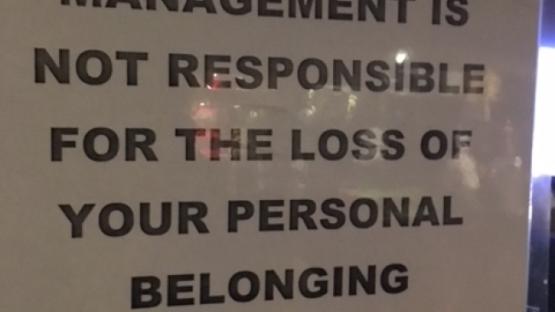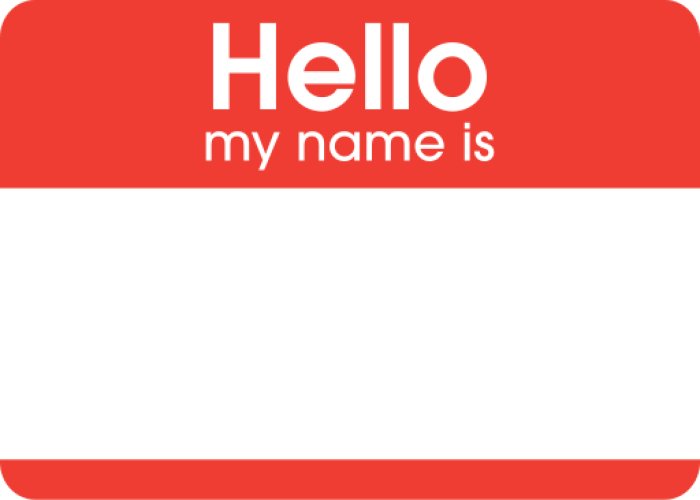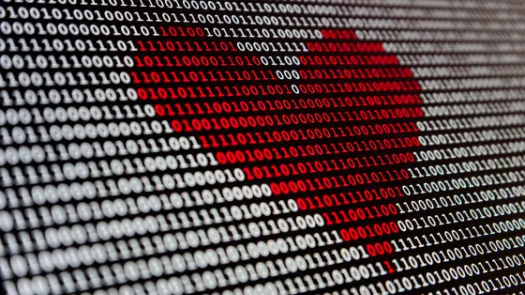Identity, discrimination, and the challenge of ID

Who are you? The Challenges of Identity and Identification
“Identity” is a word that covers an incredible range of contested, deeply personal and highly politicised questions. These range from the political and the sociological, through to the psychological and philosophical. A question such as “who are you?” can elicit a multiplicity of responses, none of which are straightforward, are sometimes highly contextual, and are often deeply contested.
However, there is something of an attempt to sidestep the issues of “identity” when the issue at hand is “identification” and ID. ID today takes many forms: from a simple piece of laminated card to a smartcard; from a number that links to a giant biometric database, to an entry on the blockchain. Whatever form it takes, the issues surrounding identity remain. The discussion of identity can too often veer into the technocratic and procedural, ignoring the more fundamental questions. But the deeper issues surrounding ‘identity’ simply cannot be ignored. Rather, the questions of identity are made manifest by ID.
The questions that are raised by ID are some of the most fundamental issues surrounding identity, personhood, and citizenship. How can people express their identity? Can this change over the course of their life? The answers offered by ID also often reflect the underlying power structures of the society in question. Questions like whose name is ‘proper’ and ‘normal’, or how gender is expressed. All of these issues reflect the underlying power dynamics in society. The risk of further alienating or excluding certain groups that are already in a marginalised position grows.
All of this occurs in the context of a changing salience of ID: ID becomes required for more and more things, to access more and more services, or to achieve more and more in our lives. That means that the challenges of identity become more pressing, and ever more important that we begin to challenge how identity and identification operate around the world.
The Philosophy of Identity
To give an example of the challenges of identity and identification: the hard and challenging questions of identity from the perspective of philosophy, that have been debated for centuries.
Philosophers have long been debating the idea of personal identity; in the Western tradition as far back as Plato. But it was John Locke (1632-1704) who began asking many of the key questions. The simple question, “Who am I?”, has generated debate ever since, alongside the questions, “Am I the same person I was ten years ago?” and “Will I be the same person ten years from now?”.
A number of competing answers have been debated over the centuries. Are these questions answered by the bodily continuity of my physical body, despite the fact that my body regenerates constantly, and I might physically not have any of the same cells in my body as I had 10 years ago? Or should our concern be psychological continuity, in which there is a continuity of our personality and memories? In which case, how should we think about people who have had massive brain injuries, that can result not in a change in our memories, personality, and even beliefs and desires? Non-Western philosophies can have a different perspective on the whole debate, including some rejecting the concept of “personal identity” altogether. These questions have not only been informed by philosophy, but also cutting-edge biology and neuroscience. As a result of this, we can expect them to continue to be a source of debate into the future.
What is clear from these debates is that they are broadly based on the idea that identity is a hugely important part of an individual’s life, and – to varying degrees – an essential part of themselves. As a result, the philosophical debate over identity is large, and long-running.
What, then, is the challenge of identification? At its heart, it’s about reducing these aspects of human experience to data points. But that is far from a simple task. To explore the complexities of this, let us look at one aspect of identification – a person’s name. Often at the heart of any identification system, it is actually an extremely complex concept.
What’s in a name?
Names often lie at the heart of an identification system. It is, after all, the way in which we commonly identify each other. And it’s clear that the day-to-day use of names varies from time to time, and place to place: depending on who we’re speaking to, we might be known by a broad range of nicknames, abbreviations, or the use (or non-use) of formal titles.
But what an identification system tries to nail down is the single, “legal name” by which a person is known – often, this means known to the state. As the historian James Scott describes it, the development of surnames in Europe from the fourteenth century was an attempt by the state to cut through the local morass of naming practices, “designed to allow officials to identify, unambiguously, the majority of its citizens”. It thus became easier for the state to administer – collect taxes, and enforce the law. This idea that was later introduced around the world as European states became colonial powers.
But naming practises around the world differ. In some traditions, a person’s name changes over their lifetime. For example, in Europe, traditionally, women change their names on marriage; the decision whether to change one’s name on marriage continuing to be an issue that ties into roles that are played, and themes of identity and family. In another example, in Native American traditions, names can change over a person’s life, from childhood to adolescence to adulthood, but also in recognition of changing life experiences and achievements. Names change according to context, from nicknames through to the selective use of formal titles. As James Scott writes, names vary greatly across the world and often depend on situation or stage in life: “Each name is specific to a phase of life, a social setting, or a particular interlocutor. To the question, ‘What is your name?’ the reply in such cases can only be: ‘It depends.’”
What, then, is someone’s “real name”? Is it their legal name, the name printed on their identity documents? Or is it something far more personal – in some cultures, individuals have a sacred name that is kept hidden from others. The role of the name printed on the ID card varies greatly from place to place, and has a very different meaning and saliency in different contexts.
Individuals can also seek to change their name if they feel that their name does not reflect their gender identity. For example, trans people who change their name may or may not have gone through the process of changing their name on official documents. In some places, changing the name and gender on official documents can be time-consuming or expensive. For example, a 2015 survey of trans people in the US found that only 11% of respondents had the name and gender on official ID that they preferred. This can create problems – emotional and psychological, as well as bureaucratic – in individuals’ interactions with institutions like healthcare providers and banks.
Trans people also suffer the use of deadnaming, using a name for them that does not coincide with the person’s gender identity. This is harmful for a number of reasons; it can breach an individual’s privacy by revealing their trans status, but also serves to delegitimise the trans person.
The use of names to discriminate against, and control, populations is not new. We’ve seen this historically in the context of domination and the exercising of brutal colonial power: for example, the “civilising” mission of the state towards Native Americans in the USA, around the start of the 20th century, involved the forcible changing of individual’s names towards something that was considered more ‘suitable’ for the state’s view of a ‘proper’ name, a move that went alongside the destruction of existing ways of life and kinship relationships. Similarly, the Canadian government found Inuit names hard to pronounce, too long, and too similar to each other. In 1969, they introduced mandatory European-style names for Inuit people. Again, this change had a moral element – based on ideas of the European family structure, rather than Inuit culture. Of course, this name change did not eliminate the use of Inuit names – rather, it meant that both names were used in parallel: one name for their official interactions with the state, another for their family.
These issues of what form a name can take are reflected in the issues that Native Americans faced having their names recognised as genuine under Facebook’s ‘real name’ policies on ‘fake’ names. When it comes to ID cards, people with names that contain hyphens in British Colombia, Canada, were told that their names were not valid for the use on the new B.C. ID card. Some names do not ‘fit’ the mould, and are thus considered invalid.
Built into the database, whether printed on the card or not, are a certain set of assumptions about a name – its nature, its length, what a name can or cannot contain. There are other underlying assumptions: that the name is a singular thing, that there is only one of them at one time.
Names and the changing salience of ID
The examples above illustrate how important names are when considering politics, discrimination and identity. Names have certainly been a source of abuse and violence of various forms – and with the scope of ID ever-growing, so does the scope of the issue.
In the past, there was perhaps more flexibility in some people’s use of names. After all, there was the possibility of using different names in different contexts; the “legal name” that the state knew you by was just one of the contextual names that an individual might have – limited to people’s often-rare interactions with the state. For some, they were in the position to understand the name the state has given us as just one among many; it is the name to be used in specific contexts (paying one’s taxes, for example) and the rest of the time other identities can come to the fore.
For some, just as names could serve as a tool for the state to exercise control, so too could they be used flexibly to subvert state power. For example, the Tanzanian state in the 1970s, feeling that the distribution of education in the country was uneven, attempted to limit members of particular ethnic groups attending state secondary schools. People from the educated yet rebellious Chagga ethnic group in Kilimanjaro were a victim of this; however, one of the techniques to ensure that their children continued to be educated in state secondary schools was through names. By dropping their distinctive clan name when enrolling, in the context of a nation with no official record of an individual’s ethnicity, Chagga children were still able to gain access to schooling. Rachel John Kessi would become Rachel John; nobody in charge of enrolment would thus know their ethnicity. Identity, in this case, was used to subvert the state’s policy.
Yet the salience of ID is changing. The scope of ID, and the issues for which it is used, is only increasing. ID is now required for such a broad range of tasks: the ‘Know Your Customer’ requirements when opening a bank account or using financial services; to access benefits; to register a SIM card to communicate (and participate socially and economically in life); and in the private sector, too. The need to make use of official ID for more and more uses means that the scope of the use of official ID is ever-increasing. And no longer is it simply a matter of a bored government employee glancing at a tattered document: the use of ID means that information about you is processed, logged, and retained.
That means that the name written on the ID is seen, stored and processed by ever-more services. And that means that the ‘legal name’ that is printed on the ID document is now relevant for more and more things. This increased scope of ID means that the damage caused by data integrity challenges, inaccuracies or other issues also increases.
People as data points: the challenges of new technologies
This issue about how we present personal identity, and its complexities, extends to the use of new technologies as well. For example, blockchain-based identity solutions have been suggested as a means of providing identity services without the risks associated with a centralized national database that is a target for criminals. For example, various initiatives around refugees aim to use blockchain-based technologies to offer refugees an “identity” and access to goods and services. While the nature of the systems may vary, one of the features of blockchain is that it is immutable– it cannot be changed. While obviously an ID scheme would be designed to reflect the changes in an individual’s status across their life-course – marriage, divorce, name changes – the fact of those changes would also be recorded on the blockchain. The immutable nature of blockchain thus makes it a challenge for the design of an identity system. The fact that someone has changed their name or other aspects of their identity is information that can lead to serious risks of abuse or violence – for example, we would want, as a society, to be sure that we protect people who have changed their identities to escape their domestic abuser. More broadly, the notion of these forms of identity, while supposedly giving more control to the individual, are still based on a set of assumptions about the nature of identity: that an individual has one, only one, identity that remains continuous through an individual’s life course. It does not leave room for nuance, complexity; it does not leave room for context.
Conclusion
What then, are the solutions to this issue? How can we have a system that, on the one hand, empowers individual in identifying themselves, and on the other accounts for the vast, and magnificent, variation on what identities can be.
The law can mitigate some of the impacts. A strong data protection regime can provide some protections, and must apply to the data surrounding any ID system as well. Sufficient regulation to protect the rights of trans people, and other groups, is also essential. In too many contexts, an ID project exists without sufficient rights in place. For example, in the Philippines, a new ID card is being introduced, despite the fact that it is not possible for someone to change their legal gender. Without those protections, trans people face abuse, discrimination and even violence. Thus, before introducing an ID system, it is essential to have protections like those offered in Argentina, where the Gender Identity Law makes it relatively straightforward for an individual to alter their legal first name and gender, and to change their ID card to reflect this. Research indicates that this has a knock-on effect in terms of how people are treated by health professionals and the police.
“Data” and “identity” is an insolvable problem: the design of any system that tries to lock this down is going to fail in some way to fully recognise the magnificent diversity in human beings when it comes to identity. The change, the flux, the contextual richness of ‘identity’ is not easy to encompass in these digital systems. That is the challenge of these systems – and, unfortunately, an imperfect design can have a legacy that goes on for generations.
Thus, questions of identity must be approached, in data-intensive systems, with caution and humility. The answer will not necessarily be a giant system, encompassing the entirety of a nation – or, indeed, all of humanity. It may be that the answers lie in a more nuanced use of identity, with the limitations of any identity system kept constantly in mind, and a recognition that one, single system does not have all the answers.




